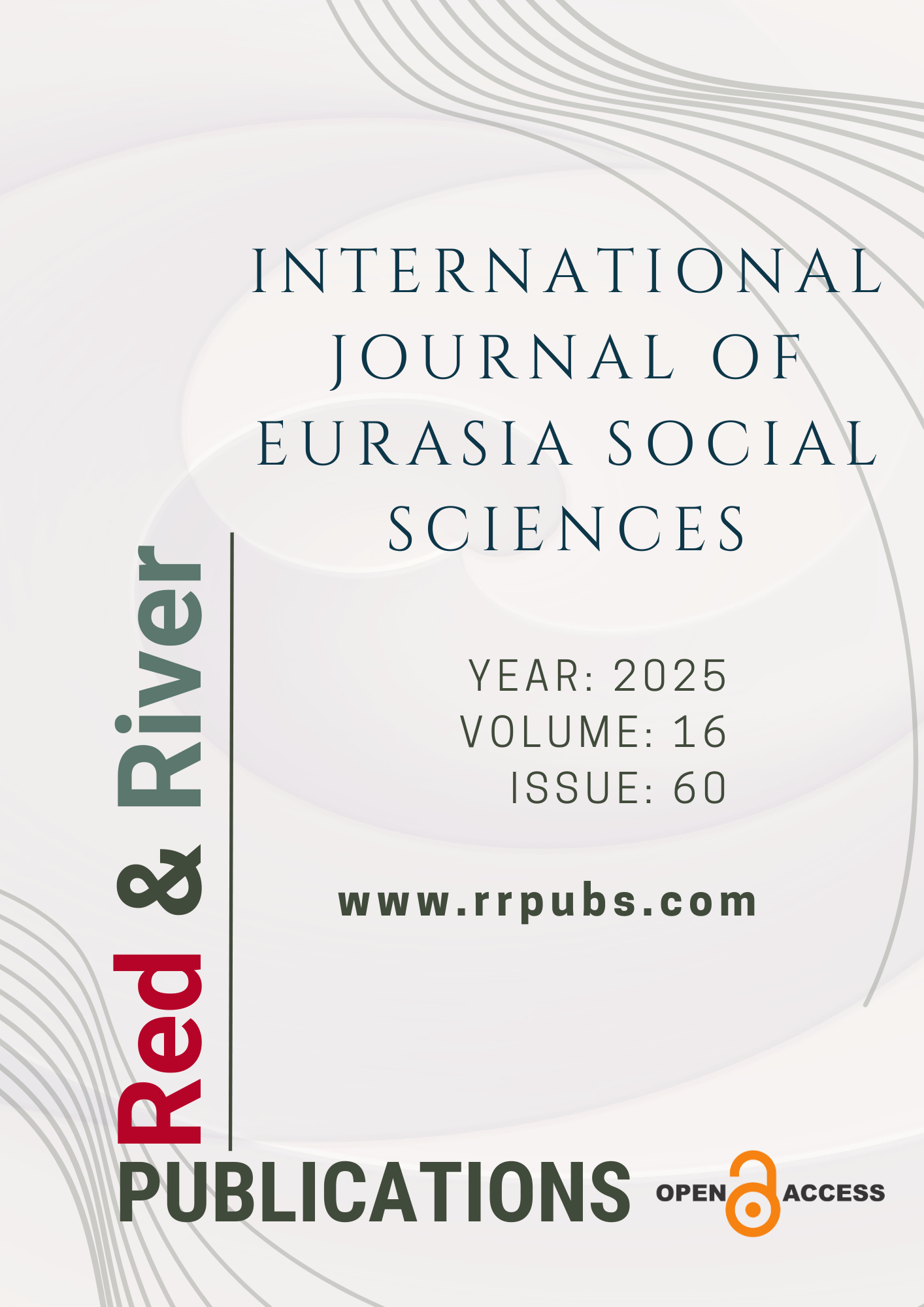An experimental study on the viola playing status of violin playing students
DOI:
https://doi.org/10.70736/ijoess.1671Keywords:
Viola, Violin, Instrument Education, Viola EducationAbstract
In this context, lack of viola instructors at high schools of fine arts in Turkey and this research is conducted in an attempt to propose solutions. Purpose of this study is to find out how viola courses are conducted at high schools with no viola instructors, and to identify the skill levels of violin students studying music teaching at faculties of education, in terms of their abilities to play the viola. Despite their differences in size and clefs, playability of the instruments by a single player in the same way play a significant role in this study in terms of its qualification as a pilot test for violin and viola; and the potential contributions to viola education by violin students who are able to play the viola. Qualitative research approach was utilized in the study and the research model was based on case study and experimental design. All the data obtained were interpreted qualitatively through content analysis. For the study group of students, trial viola courses based on c clef education were prepared for students who voluntarily participated in the study, and their before and after achievements were evaluated. It was observed that the participants revealed a significant success rate from the beginning until the end of this educational period. In the study, it was also concluded that, an additional elective viola course to the scope of violin courses within music teaching departments may serve as a solution for the problem of lack of viola instructors, detected in study group of teachers.
References
Ak R., & Tanınmış E. (2019). Hans Sitt Op. 116 viyola için 15 etüt metodunun kullanımına ilişkin öğretim elemanı görüşleri. Sanat Eğitimi Dergisi. 7(1), 23-42
Akyürek, S. (2004). Müzik tarihinde viyolanın yeri. [Yüksek Lisans Tezi, Çukurova Üniversitesi Sosyal Bilimler Enstitüsü], Adana.
Albuz, A. (2001). Viyola öğretiminde geleneksel Türk müziği ses sistemine ilişkin dizilerin kullanımı ve ses sistem kaynaklı çokseslilik yaklaşımları. [Doktora Tezi, Gazi Üniversitesi Fen Bilimleri Enstitüsü], Ankara.
Aydar, S. Ç. (2002). Ulusal viyola eğitiminin Türkiye boyutu içinde ulusal ekol yaratma. [Sanatta Yeterlilik Tezi, Dokuz Eylül Üniversitesi Sosyal Bilimler Enstitüsü]. İzmir.
Bahar, B. K. (2018). Viyola kitabı. Gece Kitaplığı.
Bahar, B.K. (2018). Lıllıan Fuchs, bir viyolacının portresi. Gece Akademisi.
Barret H. (1996). The Viola: Complete guide for teacher and students. University of Alabama Press
Başdan, F. (2008). Keman eğitimi ve viyola eğitimi arasındaki benzerlikler ve farklılıkların karşılaştırılmalı araştırması. [Yüksek Lisans Tezi, Trakya Üniversitesi Sosyal Bilimler Enstitüsü], Edirne.
Burgess, Norman E. (1975). The teaching of action in string playing: Developmental and remedial techniques Paul Rolland Marla Mutschler. Music Educators Journal, 61 (9), 77-79
Büyüköztürk, S. (2007). Sosyal bilimler için veri analizi el kitabı. (8. Baskı). Pegem Yayınevi
Çalgan, G. (2015). Kemandan viyolaya geçiş süreci. U. Ü. Fen-Edebiyat Fakültesi Sosyal Bilimler Dergisi, 17(28), 1- 9.
Çilden. Ş, (2016). Çalgı eğitiminde usta-çırak ilişkisi. Abant İzzet Baysal Üniversitesi Eğitim Fakültesi Dergisi,16(İpekyolu özel sayısı). 2208-2210.
Çilden. Ş. (2001). Müzik, çocuk gelişimi ve öğrenme. Gazi Üniversitesi Gazi Eğitim Fakültesi Dergisi, 21(1), 1-8.
Dalton, (t.y) https://viola.lib.byu.edu/viola/ sayfasından 22.03.2019 tarihinde erişilmiştir.
Fernández-Barros, A., Duran, D., & Viladot, L. (2023). Peer tutoring as a tool for developing the intonation of violin and viola students in elementary music education. Music Education Research, 25(2), 176-189.
Göbelez, C. (1996). Çalgılar dünyasında keman. Liszt Müzik evi.
Hakioğlu, S. (2018). Viyola eğitiminde viyolaya özgü teknik yaklaşımlar. İdil Dergisi, 7(44), 429-434.
Hatipoğlu, V. (2017). Türk müziği keman akordu. İdil Dergisi, 6(29), 289- 309.
Hatipoğlu, V. (2018). Mustafa Sunar’ın “alaturka keman muallimi” isimli öğretim kaynağının incelenmesi. Uluslararası Sosyal Araştırmalar Dergisi, 11(55), 605- 621.
Koçer, A. (2025). Fransız Keman Ekolü’nde Rodolfo Kreutzer’in rolü ve pedagojik katkıları, International Journal of Eurasian Education and Culture, 10(29), 20-36.
Koçer, A., & Açın, S. Y. (2025). Keman yapım sanatının tarihsel süreç içinde evrimi ve akustik özellikleri. The Journal of Academic Social Science, 162(162), 227-242.
Küçükahmet, L. (2003). Öğretimde planlama ve değerlendirme. Nobel Yayınevi.
López-Calatayud, F., Macián-González, R., & Tejada, J. (2023). An analysis-synthesis of the pedagogical literature on intonation in initial learning of violin and viola: Pitch contents, teaching approaches, and auxiliary resources. String Research Journal, 13(1), 73-91.
Nelson, D. J. (1983). String teaching and performance: A review of research findings. Bulletin of the Council for Research in Music Education, 74, 39–46.
Okay, H. H. & Kurtaslan, Z. (2013). Keman ve viyolada ton üretimi. Eğitim ve Öğretim Araştırmaları Dergisi, 2(1), 274- 282.
Özen, N. (2004). Çalgı eğitiminde yararlanılan müzik eğitimi yöntemleri. Gazi üniversitesi Gazi Eğitim Fakültesi Dergisi, 24(2) 57-63.
Özkarar, G. (2017). Tarihsel süreçte gelişen viyola ekolleri. Hiper Yayınevi.
Rolland, P. (1979). Movement in string playing: As it relates to the violin. American String Teacher, 29(1), 8-11.
Selçuk, Z. (2009). Eğitim psikolojisi. Nobel Yayınevi.
Sitt, H. (1903). 15 studies for viola op. 116, Edition Albert J. Kunzelmann.
Soydaş, E., & Beşiroğlu, Ş. Ş. (2007). Osmanlı saray müziğinde yaylı çalgılar. İstanbul Teknik Üniversitesi Dergisi, 4(1), 3- 12.
Tanrıverdi, A. (1993). Viyola metodu I. Gaye Filmcilik.
Tanrıverdi, A. (1997). Anadolu güzel sanatlar liselerinin müzik bölümlerinde uygulanan çalgı eğitimini ve viyolanın çalgı eğitimi içerisindeki yeri. Mavi Nota Müzik ve Sanat Dergisi, 5(25),7-9.
Tosun, T., & Özkeleş, S. (2025). Çalgı eğitiminde karşılaşılan fizyolojik rahatsızlıklar. Online Journal of Music Sciences, 10(1), 96-120.
Türk Dil Kurumu. (2011). Türkçe sözlük. Türk Dil Kurumu.
Varış, Y. A. (2006). Kemandan viyolaya geçişte karşılaşılan güçlüklerin viyola eğitimine yansımaları. [Yayınlanmamış yüksek lisans tezi. Bolu İzzet Baysal Üniversitesi Sosyal Bilimler Enstitüsü], Bolu.
Yıldırım, A., & Şimşek, H. (2018). Sosyal bilimlerde nitel araştırma yöntemleri. Seçkin Yayıncılık
Downloads
Published
How to Cite
Issue
Section
License
Copyright (c) 2025 Döne Görkem Kumtepe- Mehmet Efe

This work is licensed under a Creative Commons Attribution 4.0 International License.

